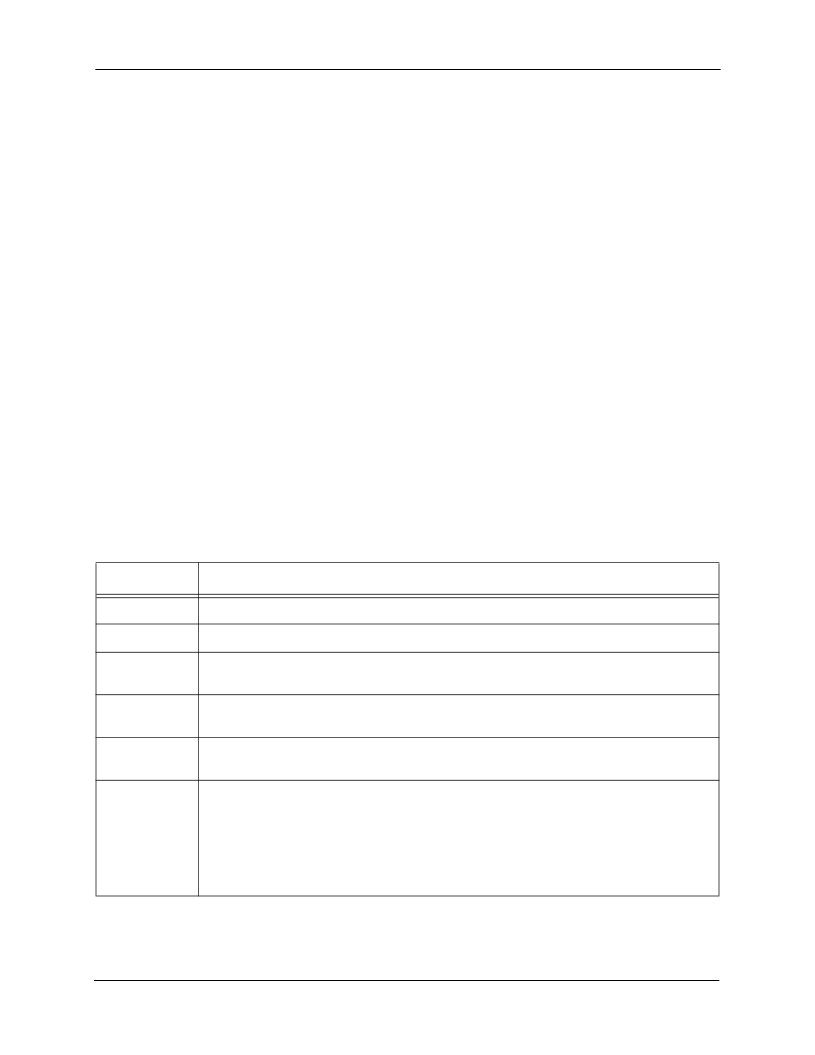- 您現(xiàn)在的位置:買賣IC網(wǎng) > PDF目錄371612 > 56KCCUM 56kcc Users Manual PDF資料下載
參數(shù)資料
| 型號(hào): | 56KCCUM |
| 英文描述: | 56kcc Users Manual |
| 中文描述: | 56kcc用戶手冊(cè) |
| 文件頁(yè)數(shù): | 317/386頁(yè) |
| 文件大?。?/td> | 3526K |
| 代理商: | 56KCCUM |
第1頁(yè)第2頁(yè)第3頁(yè)第4頁(yè)第5頁(yè)第6頁(yè)第7頁(yè)第8頁(yè)第9頁(yè)第10頁(yè)第11頁(yè)第12頁(yè)第13頁(yè)第14頁(yè)第15頁(yè)第16頁(yè)第17頁(yè)第18頁(yè)第19頁(yè)第20頁(yè)第21頁(yè)第22頁(yè)第23頁(yè)第24頁(yè)第25頁(yè)第26頁(yè)第27頁(yè)第28頁(yè)第29頁(yè)第30頁(yè)第31頁(yè)第32頁(yè)第33頁(yè)第34頁(yè)第35頁(yè)第36頁(yè)第37頁(yè)第38頁(yè)第39頁(yè)第40頁(yè)第41頁(yè)第42頁(yè)第43頁(yè)第44頁(yè)第45頁(yè)第46頁(yè)第47頁(yè)第48頁(yè)第49頁(yè)第50頁(yè)第51頁(yè)第52頁(yè)第53頁(yè)第54頁(yè)第55頁(yè)第56頁(yè)第57頁(yè)第58頁(yè)第59頁(yè)第60頁(yè)第61頁(yè)第62頁(yè)第63頁(yè)第64頁(yè)第65頁(yè)第66頁(yè)第67頁(yè)第68頁(yè)第69頁(yè)第70頁(yè)第71頁(yè)第72頁(yè)第73頁(yè)第74頁(yè)第75頁(yè)第76頁(yè)第77頁(yè)第78頁(yè)第79頁(yè)第80頁(yè)第81頁(yè)第82頁(yè)第83頁(yè)第84頁(yè)第85頁(yè)第86頁(yè)第87頁(yè)第88頁(yè)第89頁(yè)第90頁(yè)第91頁(yè)第92頁(yè)第93頁(yè)第94頁(yè)第95頁(yè)第96頁(yè)第97頁(yè)第98頁(yè)第99頁(yè)第100頁(yè)第101頁(yè)第102頁(yè)第103頁(yè)第104頁(yè)第105頁(yè)第106頁(yè)第107頁(yè)第108頁(yè)第109頁(yè)第110頁(yè)第111頁(yè)第112頁(yè)第113頁(yè)第114頁(yè)第115頁(yè)第116頁(yè)第117頁(yè)第118頁(yè)第119頁(yè)第120頁(yè)第121頁(yè)第122頁(yè)第123頁(yè)第124頁(yè)第125頁(yè)第126頁(yè)第127頁(yè)第128頁(yè)第129頁(yè)第130頁(yè)第131頁(yè)第132頁(yè)第133頁(yè)第134頁(yè)第135頁(yè)第136頁(yè)第137頁(yè)第138頁(yè)第139頁(yè)第140頁(yè)第141頁(yè)第142頁(yè)第143頁(yè)第144頁(yè)第145頁(yè)第146頁(yè)第147頁(yè)第148頁(yè)第149頁(yè)第150頁(yè)第151頁(yè)第152頁(yè)第153頁(yè)第154頁(yè)第155頁(yè)第156頁(yè)第157頁(yè)第158頁(yè)第159頁(yè)第160頁(yè)第161頁(yè)第162頁(yè)第163頁(yè)第164頁(yè)第165頁(yè)第166頁(yè)第167頁(yè)第168頁(yè)第169頁(yè)第170頁(yè)第171頁(yè)第172頁(yè)第173頁(yè)第174頁(yè)第175頁(yè)第176頁(yè)第177頁(yè)第178頁(yè)第179頁(yè)第180頁(yè)第181頁(yè)第182頁(yè)第183頁(yè)第184頁(yè)第185頁(yè)第186頁(yè)第187頁(yè)第188頁(yè)第189頁(yè)第190頁(yè)第191頁(yè)第192頁(yè)第193頁(yè)第194頁(yè)第195頁(yè)第196頁(yè)第197頁(yè)第198頁(yè)第199頁(yè)第200頁(yè)第201頁(yè)第202頁(yè)第203頁(yè)第204頁(yè)第205頁(yè)第206頁(yè)第207頁(yè)第208頁(yè)第209頁(yè)第210頁(yè)第211頁(yè)第212頁(yè)第213頁(yè)第214頁(yè)第215頁(yè)第216頁(yè)第217頁(yè)第218頁(yè)第219頁(yè)第220頁(yè)第221頁(yè)第222頁(yè)第223頁(yè)第224頁(yè)第225頁(yè)第226頁(yè)第227頁(yè)第228頁(yè)第229頁(yè)第230頁(yè)第231頁(yè)第232頁(yè)第233頁(yè)第234頁(yè)第235頁(yè)第236頁(yè)第237頁(yè)第238頁(yè)第239頁(yè)第240頁(yè)第241頁(yè)第242頁(yè)第243頁(yè)第244頁(yè)第245頁(yè)第246頁(yè)第247頁(yè)第248頁(yè)第249頁(yè)第250頁(yè)第251頁(yè)第252頁(yè)第253頁(yè)第254頁(yè)第255頁(yè)第256頁(yè)第257頁(yè)第258頁(yè)第259頁(yè)第260頁(yè)第261頁(yè)第262頁(yè)第263頁(yè)第264頁(yè)第265頁(yè)第266頁(yè)第267頁(yè)第268頁(yè)第269頁(yè)第270頁(yè)第271頁(yè)第272頁(yè)第273頁(yè)第274頁(yè)第275頁(yè)第276頁(yè)第277頁(yè)第278頁(yè)第279頁(yè)第280頁(yè)第281頁(yè)第282頁(yè)第283頁(yè)第284頁(yè)第285頁(yè)第286頁(yè)第287頁(yè)第288頁(yè)第289頁(yè)第290頁(yè)第291頁(yè)第292頁(yè)第293頁(yè)第294頁(yè)第295頁(yè)第296頁(yè)第297頁(yè)第298頁(yè)第299頁(yè)第300頁(yè)第301頁(yè)第302頁(yè)第303頁(yè)第304頁(yè)第305頁(yè)第306頁(yè)第307頁(yè)第308頁(yè)第309頁(yè)第310頁(yè)第311頁(yè)第312頁(yè)第313頁(yè)第314頁(yè)第315頁(yè)第316頁(yè)當(dāng)前第317頁(yè)第318頁(yè)第319頁(yè)第320頁(yè)第321頁(yè)第322頁(yè)第323頁(yè)第324頁(yè)第325頁(yè)第326頁(yè)第327頁(yè)第328頁(yè)第329頁(yè)第330頁(yè)第331頁(yè)第332頁(yè)第333頁(yè)第334頁(yè)第335頁(yè)第336頁(yè)第337頁(yè)第338頁(yè)第339頁(yè)第340頁(yè)第341頁(yè)第342頁(yè)第343頁(yè)第344頁(yè)第345頁(yè)第346頁(yè)第347頁(yè)第348頁(yè)第349頁(yè)第350頁(yè)第351頁(yè)第352頁(yè)第353頁(yè)第354頁(yè)第355頁(yè)第356頁(yè)第357頁(yè)第358頁(yè)第359頁(yè)第360頁(yè)第361頁(yè)第362頁(yè)第363頁(yè)第364頁(yè)第365頁(yè)第366頁(yè)第367頁(yè)第368頁(yè)第369頁(yè)第370頁(yè)第371頁(yè)第372頁(yè)第373頁(yè)第374頁(yè)第375頁(yè)第376頁(yè)第377頁(yè)第378頁(yè)第379頁(yè)第380頁(yè)第381頁(yè)第382頁(yè)第383頁(yè)第384頁(yè)第385頁(yè)第386頁(yè)

Stopping and Continuing
Motorola
GNU Debugger (GDB)
For More Information On This Product,
Go to: www.freescale.com
D-17
GDB has the ability to detect any occurrence of a signal in the program running under
GDB’s control. You can tell GDB in advance what to do for each kind of signal.
Normally, GDB is set up to ignore non-erroneous signals like SIGALRM (so as not to
interfere with their role in the functioning of the program) but to stop the program
immediately whenever an error signal happens. You can change these settings with the
‘handle’ command. You must specify which signal you are talking about with its number.
info signal
Print a table of all the kinds of signals and how GDB has been told to handle each one.
You can use this to see the signal numbers of all the defined types of signals.
handle signalnum keywords...
Change the way GDB handles signal
signalnum
. The keywords say what change to make.
To use the ‘handle’ command you must know the code number of the signal you are
concerned with. To find the code number, type ‘info signal’ which prints a table of signal
names and numbers.
The keywords allowed by the handle command can be abbreviated. Table D-4 lists their
full names:
Table D-4. Keywords
Keyword
Description
stop
GDB should stop the program when this signal happens. This implies the ‘print’ keyword as well.
print
GDB should print a message when this signal happens.
nostop
GDB should not stop the program when this signal happens. It may still print a message telling
you that the signal has come in.
noprint
GDB should not mention the occurrence of the signal at all. This implies the ‘nostop’ keyword as
well.
pass
GDB should allow the program to see this signal; the program will be able to handle the signal,
or may be terminated if the signal is fatal and not handled.
nopass
GDB should not allow the program to see this signal.When a signal has been set to stop the
program, the program cannot see the signal until you continue. It will see the signal then, if
‘pass’ is in effect for the signal in question at that time. In other words, after GDB reports a
signal, you can use the ‘handle’ command with ‘pass’ or ‘nopass’ to control whether that signal
will be seen by the program when you later continue it.You can also use the ‘signal’ command to
prevent the program from seeing a signal, or cause it to see a signal it normally would not see,
or to give it any signal at any time. See section Signaling.
F
Freescale Semiconductor, Inc.
n
.
相關(guān)PDF資料 |
PDF描述 |
|---|---|
| 570165000 | UPS POWERSTART 400VA |
| 570166000 | UPS POWERSTART 600VA |
| 570250000 | DESKPOWER 500 UPS |
| 570251000 | DESKPOWER 650 UPS |
| 573 | DESOLDERING GUN |
相關(guān)代理商/技術(shù)參數(shù) |
參數(shù)描述 |
|---|---|
| 5-6KINTERFACE | 功能描述:數(shù)據(jù)轉(zhuǎn)換 IC 開發(fā)工具 5-6K Inter Eval Mod RoHS:否 制造商:Texas Instruments 產(chǎn)品:Demonstration Kits 類型:ADC 工具用于評(píng)估:ADS130E08 接口類型:SPI 工作電源電壓:- 6 V to + 6 V |
| 56KINTMODEM-01 | 功能描述:56K V.92 INTERNAL MODEM 制造商:lantronix, inc. 系列:- 零件狀態(tài):在售 類型:調(diào)制解調(diào)器 配套使用產(chǎn)品/相關(guān)產(chǎn)品:SLC? 8000 系列 標(biāo)準(zhǔn)包裝:1 |
| 56KMODEMCARD-02 | 制造商:Lantronix Inc 功能描述:56K V.92 PC CARD MODEM WITH RJ |
| 56KUSBMODEM-01 | 功能描述:56K V.92 EXTERNAL USB MODEM (ROH 制造商:lantronix, inc. 系列:- 零件狀態(tài):在售 類型:USB 調(diào)制解調(diào)器 配套使用產(chǎn)品/相關(guān)產(chǎn)品:- 標(biāo)準(zhǔn)包裝:1 |
| 56L10000BM | 制造商: 功能描述: |
發(fā)布緊急采購(gòu),3分鐘左右您將得到回復(fù)。